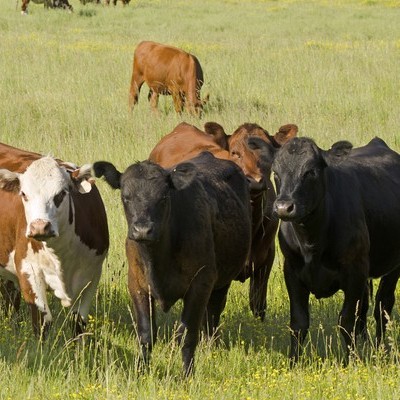Bluetongue is a non-contagious, viral disease affecting domestic and wild ruminants (primarily sheep and including cattle and goats), that is transmitted by insects, particularly biting midges.
The severity of disease varies among different species with symptoms being most severe in sheep resulting in death, weight loss and disruption in wool growth. In highly susceptible sheep, morbidity can be as high as 100%. Mortality averages from 2-30% but can be as high as 70%. Cattle often have a higher infection rate than sheep and demonstration and severity of clinical signs varies depending on the strain of virus.
Where is the disease found?
Blue Tongue has a significant global distribution in regions where the insect vector (ie, biting midges species Culicoides) is present, including Africa, Asia, Australia, Europe and North America. The virus is maintained in areas where the climate will allow biting midges to survive over winter. The geographical distribution of the insect vector species generally limits the distribution of the disease.
Generally, sheep found in areas where the disease is endemic are naturally resistant to Blue Tongue. Outbreaks occur when susceptible sheep, particularly European breeds are introduced to endemic areas, or when the virus is introduced to a region by windborne movement of infected Culicoides. Occurrence of Blue Tongue generally parallels vector activity surging during periods of high temperature and rainfall and subsiding with the first frost or severe cold weather.
How is the disease transmitted and spread?
The insect vector is the key to transmission of Blue Tongue virus between animals. Vectors are infected with Blue Tongue virus after ingesting blood from infected animals. Without the vector, the disease cannot spread from animal to animal.
Blue Tongue virus transmission can occur throughout the year, particularly during rainy periods. Infected cattle play a significant role in maintaining the virus in a region. Cattle may serve as a source of virus for several weeks while displaying little or no clinical signs of disease and are often the preferred host for insect vectors.
The virus has been found in semen from infected bulls and rams and can be transmitted to susceptible cows and ewes but this is not a significant mechanism of transmission. Virus can also be transferred through the placenta to the fetus.
The Blue Tongue virus is not transmitted through contact with animals, wool or consumption of milk. There is no public health risk associated with Blue Tongue.
What are the clinical signs of the disease?
The appearance of clinical signs in cattle will depend on the strain of virus and it is possible that cattle will show no signs of illness; however, clinical signs have included:
-
nasal discharge
-
swelling of the head and neck
-
conjunctivitis (red and runny eyes)
-
swelling inside and ulceration of mouth
-
swollen teats
-
tiredness
-
saliva drooling out of mouth
-
fever
Prevention & control measures
In endemic areas, sentinel monitoring programs actively sample animals in sentinel herds to monitor for presence of the virus. In combination with active surveillance programs to identify location, distribution and prevalence of insect vectors in an area, control measures can be implemented in a timely fashion such as:
-
identification, surveillance and tracing of susceptible and potentially infected animals
-
quarantine and/or movement restrictions during insect activity period
-
vaccination
-
insect control measures
Vaccination is used as the most effective and practical measure to minimise losses related to the disease and to potentially interrupt the cycle from infected animal to vector. It is essential to use a vaccine designed to provide protection against the specific strain (or strains) of virus of concern in a particular area.





